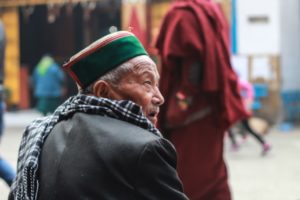
“No one leaves home unless
home is the mouth of a shark
you only run for the border
when you see the whole city running as well
you only leave home
when home won’t let you stay”
– Warsan Shire.
As economies are slowly looking back at the benefits reaped off of hyper-globalization, there is also a sense of urgency in that geopolitical policies are finding increasing resonance with protectionist laws. Recent events testify to the shifting focus on individual countries’ stance on border laws and the latter’s permeable nature. Whether it be United Kingdom, Catalan, Trump’s policy on Mexican borders or Nepali constitutional issues, there is an evident transition to a more inward-looking geopolitical climate. While this is taking place, there is a diminishing focus on resolving the national and civil political instability in the Middle East, Africa and South Asia. In the battle to find a balance between being globalized and local, nations are beginning to sideline perhaps the largest humanitarian issue that mankind must deal with- refugees. The refugee crisis world over has been worsening ever since colonization began to recede and until now, there has been no comprehensive action on targeting the minimalizing of war- civil or declared- which is the root cause of the refugee crisis.
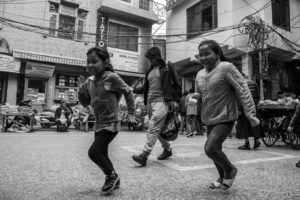
A country that boasts of diversity like no other, India rose as a nation that was surgically divided into two parts, India and Pakistan. The world became witness to one of the largest known displacements throughout history and Kashmir became a forever disputed state. With a regular influx of immigrants from all over the world, Delhi is no stranger to the status of a host state. Project Dhara looked into the issue of the current status of the major refugee communities
residing in the capital.
IRAQI and SYRIAN COMMUNITIES:
India’s capital has been a haven for an outpour of population from the Middle East and particularly South Asia. A few reasons can be held accountable for the same out of which the most understandable is that there is no policy on domestic asylum law. Over that, New Delhi being the capital city and the point of the most intimate contact between the State and its citizens, it houses not only the people that fled Pakistan in 1947 but also a host of other communities- Somalis, Iraqis, Syrians, Afghans and now Rohingya Muslims fleeing Myanmar. In focus here are two particular communities whose presence has added to the cultural 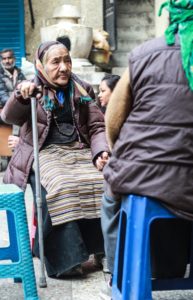 ethos of the city that is anyway so multicultural and juxtaposed the idea of inadequate humanitarian support with the city that holds the UNHCR office and the State’s office.
ethos of the city that is anyway so multicultural and juxtaposed the idea of inadequate humanitarian support with the city that holds the UNHCR office and the State’s office.
The cultures of Asia and Middle East will remain in a constant flux, whether it be because of their histories or that India shares a majority of its borders with Muslim-dominated nations. Further lending energy to this flux is the refugee crisis. When the Tunisian Revolution in 2010 came to action, no one would have even thought that this fight for democratization of Muslim-majority nations in the Middle East will result in a multi-sided ongoing armed conflict in forms of uprisings and civil wars that are still very fresh. With this scale of destruction taking place at a rapid speed all across Middle East, naturally India became a hotspot for those whose sense of belonging had been challenged time and again.
Primarily, refugees and asylum seekers came here looking for cheaper medical care and a space that would allow them to be in transit until their own homes were normalized. Back home, they battled high unemployment, food inflation, corruption, lack of political freedom and poor living conditions. On seeking refuge in India, the situation did not fare any better. Sarita Vihar, a neighborhood that sits close to the industrial towns of Faridabad and Okhla hosts refugees from Syria, Afghanistan and Somalia. On talking to one such family of five, Zubin Ali and his wife Shadiha, one can feel the uprooted existence that they still fondly call their own. Medical tourism gave impetus to these refugees and opened up opportunities for employment. Ali tells me how when he moved here in 2012, he was unsure of what he and his wife will do. It has been 5 years and because India does not have any strict laws on asylum, neither is it a signatory to the 1951 convention, basic facilities like education and health are unavailable
and Ali fears that his kids will grow without any basic knowledge. When I suggested the idea of
homeschooling, he highlights his lack of economic independence owing to which he cannot afford the resources to homeschool three children. By this point, their daughter, Yana, about 10 years old has come back home after playing with girls of her age. While communal disharmony grips their everyday lives, gender-based norms are equally visible. When I ask her why she’s back so soon, she says it is not safe and that it is going to get dark. At this I cannot help but think how my presence in the room automatically proves to be an antithesis to these gender norms. Shadiha says something in her language which I naturally fail to comprehend and Ali explains that sweets to serve their guests are scarce now.
Since this neighborhood is close to the many hospitals that cater to a plethora of international medical tourists, food and hospitality is an obvious employment generator. Ali himself runs a service for providing home cooked food in partnership with a local and sells these boxes to families of patients.
Logistical issues have hindered the business but other than that the supply was good since Indian food was not always well received among the refugee population. Here is where we note the confluence of Syrian food and Mumbai’s dabba service, the latter being popularized by Irrfan Khan’s The Lunchbox. Caravan did a similar story on a Syrian refugee working as a chef in a hotel in Sarita Vihar. Even though nations are becoming more inward-looking, cuisine and handicrafts are two very strong entry points for refugees to feel more accepted in a diverse cultural ethos which exudes a vibe that is accommodating.
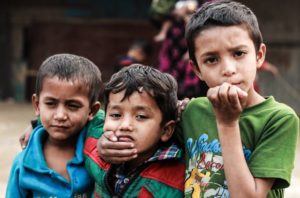
Firstpost did a 4-part series on refugees in India and highlighted the same issues and even with a wealth of information on this humanitarian crisis, we have failed as a global community to uphold the value of man’s cultural, spatial, political and national identity. As Zubin Ali and his family hope to return to Syria one day, the three kids Melihah, Yana and Masood are positive that they will bring their own children up in a fabric that is Syrian in essence.
THE ROHINGYAS:
The Rohingya crisis has engulfed South-East Asia with thousands of migrants illegally entering the borders of the neighbouring countries of Myanmar, who has termed them as ‘illegal immigrants from Bangladesh’. They have been deprived of basic amenities and schemes from the government and they haven’t been given citizenship rights. In 2012, hundreds of villages were burnt by the military in the Rakhine region which made a large population of the minority leave the country. The Rohingyas were (still are) a minority community in Myanmar, who face violence by the military consistently.
Amidst closely knit labyrinth of streets of Kalindi Kunj, speaks equally numbed voices, who now fear to talk to strangers. Living on a small piece of land granted by the Zakat Foundation, an NGO in New Delhi, the place eulogises the sorrow left unsaid. “We have no place of our own, this is our place, this is where we live and do all our work” is a voice evoked by an old lady, sitting crossed legs with saree tucked in between, near the slum entrance. People share more or less the same journey as one narrates her story others rush in, widening the circle, uttering all what happened that shouldn’t have happened, for what they were not prepared, for what was unjustified but most significantly what had happened. Left till Bangladesh by boat they entered India either by boat or train. Arshad, is a 5-year-old who is one of the few who was born in India. His parents had fled Myanmar and to Bangladesh and then had arrived in India in 2012. Arshad goes to a nearby school and has toys to play with, his parents were not so lucky.
His father Rafik, in recalling his life in Myanmar gets teary-eyed, “we were always under threat”, he says, “they took away most of our money and arrested my father’. Rafik was young when his father was arrested, he along with three of his siblings and his mother fled to Bangladesh, where his mother died. The cause of her death, Rafik claims was due to “high fever” as she had not been treated.
Stories of such atrocities remain common in the Kalindi Kunj Camp. Most of the residents have been here since 2012 but the population remains ever increasing with people like Umaira Begum, arriving as recently as six months ago. Her daughters were killed in the military violence in Myanmar, their photo secured near her makeshift bed. In describing the incident she mentions how the men in uniforms hit her, tore her clothes and tried to rape her.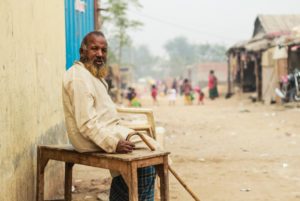
Most of the refugees who are now settled in the camp have been given a refugee card by the UNHRC and therefore have become eligible for jobs and education. As a community, the Rohingyas of Kalindi Kunj are trying to constitute a self – sufficient, as many of them, have tiny shops selling groceries or vegetables and often exchange services. The houses in the camp are mostly made of brick walls and covered with tarpaulin that are the size of a room. The living conditions remain unsanitary and therefore prone to diseases. Nevertheless, the community has now built a life for themselves, their kids are going to school, they have jobs and there is no violence inflicted upon them. However, with several political statements being made with an intention to deport them, the Rohingyas once again have become nervous about their future and have demanded rights from the Indian Government.
THE SOMALIANS:
The city’s Khirkee Extension is home to refugees from Somalia.
Amnesty International, a non-governmental organisation that focuses on human rights, confirmed in its 2016-2017 report that armed conflict continues between Somali Federal Government (SFG) forces, African Union Mission in Somalia (AMISOM) peacekeepers and al-Shabaab, a jihadist fundamentalist group that has a history of killing civilians in public by firing mortars, beheading and stoning, and carrying out amputations and floggings.
The report details that more than 50,000 civilians were killed, injured or displaced as a result of the armed conflict and generalised violence, while about 4.7 million people needed humanitarian assistance; 950,000 didn’t have food security. These refugees who come to India with hopes for better prospects find themselves tilling in the hotchpotch of city’s life, where the tension and worries do not cease and city’s bleak roads smoulder into a yet another quandary.
When asked what is the one thing that they want, they replied:
“We don’t want anything….we just want to live…security, degree and work.”
The other quickly adds, “Provide us (hinting at the government) with the means to live and work”.
Dr. Huda, a Somali academic believes that migration is one of the best things that can happen. According to her migration is actually the best thing that can happen to any country or society. She adds, “When we look at the US today, what is US made up of- migrants from around the world. Don’t see us as burden see us as what we can contribute to the society in a larger way. “
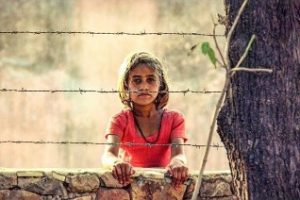
THE TIBETANS:
New Arjuna Nagar, or what is now popularly called Majnu Ka Tila lies on eastern banks on Yamuna and is home to Tibetan refugees who migrated here in 1959, post the Chinese invasion. The demography of this area, which is now the hub of multi-cuisine cafes and restaurants, mostly consists of second generation of Tibetans who were born in India. Although the community has a settled lifestyle in MKT, the government has failed to recognise the area and hence, is still considered an illegal settlement.
The Chinese invasion of Tibet, which was an autonomous land, led the Dalai Lama with some of his followers to escape to India and reach Dharamshala, another route which the followers took was from Arunachal Pradesh. Lobseng’s grandmother and mother took the same route while fleeing Tibet. Lobseng has taken over the ownership of Dolma House, which was established in 1984 by his parents. “The purpose of the café then was to give refuge and protection to the Tibetans who travelled who from Dharamshala and elsewhere,” narrates Lobseng, “It started out small, with homemade momos, thukpa and tea and then turned into a restaurant.” His grandmother would often mention while recalling her first few days in India, how much she loathed ‘dal’ and missed ‘yak meat’, which was a staple in the colder Tibet. Lobseng, however, identifies with both, Tibet and Delhi, claiming that he is “a Delhi-ite, with the heart of Tibet.”
Another tale is of Khenrab, who was born and brought up in Himachal Pradesh but identifies himself as a Tibetan first. He takes pride in his culture and is an important member of the community and often deals with the region’s upkeep. An original photograph of Potala Palace hangs at the central wall in his café, the famous Kham Coffee House. Interestingly, some of the artefacts displayed at the coffee shop are personal and family heirlooms. “I like to display them here” he boasts “I want people to see where I come from.” His family was one of the noble families in Tibet before the invasion of 1959 and although he does reminisce the past, he seems content.
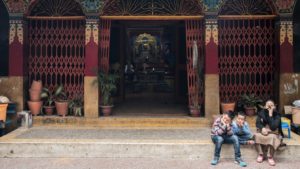 Majnu Ka Tila is a quintessential example of a modern day refugee settlement. It showcases the
Majnu Ka Tila is a quintessential example of a modern day refugee settlement. It showcases the
changing vision as the new and younger generation takes over but does not in any way forget the past. The Tibetans continue to fight for a Free Tibet but also seem settled with their new life. MKT which was earlier a shelter for the refugees has now become a major cultural centre.
A UNHCR report from 2013 states that “…Even though many Indians continue to be mired in poverty, the government provides access to health, education and potentially to selected poverty alleviation schemes to refugees. This is all the more significant since India is neither a signatory to the 1951 Convention nor does it have a national refugee law.” Although some of the measures taken are commendable, it does raise questions like- What’s a refugee’s life like? How do refugee children spend time when they can’t afford to go to school? What are their dreams? All dwindle during the day and when night comes, their hands move across their belted bodies, for if they have come, they need to survive. The night wraps their bodies into an oblivious hope and the dawn sets a new story for another day.
Authors: Aakriti Arora, Ayushka Anjiv, Himanshu Arya


good stuff. I will make sure to bookmark your blog.
With thanks! Valuable information!
Black on black in the Charger I’m creepin’ Rub me the right way, you might get a genie B.o.B, black Houdini